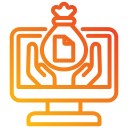
Streamlining Non-Profit Operations with AI Technology
Harnessing the power of artificial intelligence is transforming how non-profit organizations operate. By leveraging AI technology, non-profits can improve efficiency, enhance impact, and allocate more resources directly to their missions. From automating routine administrative tasks to gaining deeper insights on donor engagement, AI is redefining what’s possible. This page explores how integrating advanced AI tools can help non-profits navigate operational challenges, better serve their communities, and create sustainable organizational growth.
Automating Routine Tasks
Non-profits often face countless routine processes, from scheduling meetings to managing event registrations and donor communications. AI-driven scheduling assistants, chatbots, and automated workflows can handle these tasks efficiently, ensuring nothing falls through the cracks. By automating administrative tasks, organizations reduce the likelihood of human error and increase productivity. This not only decreases the operational burden on staff but also ensures that valuable human resources are deployed where they can make the greatest impact—on strategic planning and community outreach.
Data Entry and Record Keeping
Manual data entry can be time-consuming and prone to errors, especially with large datasets involving donors, volunteers, or beneficiaries. AI technology streamlines data capture, validation, and storage, ensuring accuracy and compliance with data protection regulations. Automated data management supports real-time updates and easier access to information, which empowers staff to make data-driven decisions. Ultimately, AI-driven record keeping transforms raw data into organized, actionable insights, making it easier for non-profits to monitor progress and report on activities with greater confidence.
Streamlined Volunteer Management
Coordinating volunteer schedules and matching them with suitable roles and projects can be complex, particularly as organizations grow. AI powers advanced matching algorithms and predictive analytics, optimizing volunteer placement and shift management. Automated communication tools keep volunteers informed and engaged, reducing drop-off rates and increasing satisfaction. The result is a more responsive, well-organized volunteer program where both participants and organizational needs are prioritized for maximum impact.
Previous slide
Next slide
Advancing Fundraising and Donor Engagement
01
AI’s ability to analyze past donor behavior means communications can be tailored to individual interests, donation history, and preferred channels. These personalized interactions lead to higher engagement rates and enhance donor loyalty. As AI tools continuously learn from each interaction, they help refine messaging and timing for future campaigns. This dynamic approach ensures each supporter feels valued and increases the likelihood of ongoing contributions, directly supporting the organization’s mission.
02
Artificial intelligence can analyze vast amounts of data—from previous campaign performance to global giving trends—providing non-profits with predictive insights into donor behavior and potential funding opportunities. By understanding who is most likely to give, how much, and at what times, organizations can strategically target their fundraising efforts for maximum return. Predictive analytics also help identify lapsed donors and suggest tailored re-engagement strategies, strengthening the organization’s fundraising pipeline.
03
AI-powered tools can track and analyze the performance of fundraising campaigns in real time, allowing non-profits to respond quickly to emerging trends and donor feedback. Automated A/B testing and sentiment analysis refine messaging and optimize donation platforms for better user experience. These capabilities maximize conversion rates and ensure resources are allocated to the most successful initiatives, driving long-term fundraising growth while maintaining transparency and accountability to stakeholders.

Improving Program Delivery and Impact
AI tools can aggregate and analyze community feedback, demographic data, and social trends to identify unmet needs and service gaps. By detecting patterns and predicting future requirements, non-profits can adapt their programs to remain relevant and impactful. These analytical insights support better decision-making and resource allocation, ensuring that each program targets the most pressing issues in the community and delivers meaningful results for beneficiaries.
